Explaining the Wind Mitigation Form
Wind mitigation inspector explains form OIR-B1-1802: defined as a form that the insurance company uses to determine the stability of a home’s construction in the event of strong winds. In many cases, a homeowner can submit the results of their wind mitigation inspection to the insurer and obtain discounts on homeowners’ premiums.
During a recent inspection in Ft. Lauderdale, Broward County the inspector performed a wind mitigation inspection where the client was new to the wind mitigation form and the process. This happens frequently so we wanted to provide a breakdown of the form and how your inspection will look as the home inspector navigates your property to collect the information needed to complete the form.
(The snippets following are examples from the form and an inspection being performed. Not a complete picture but enough to have a good idea of the process)
Wind Mitigation Inspection Checklist
Step 1 – The home inspector will take elevation photos from each side of the home or building being inspected. This is done from the ground or using a drone and sometimes both.
Step 2 – The home inspector will document when the building was built by answering one of the following criteria below. Homes built before SFBC-94 are typically known to not have certain wind mitigation mechanisms. If you are buying a home built before 9/1/1994 then you want to ensure you check to see if it has wind mitigation updates.
Step 3: The home inspector will document what type of roof covering is being used and collect the documentation from the homeowner for the permit and/or product approval number. Most homeowners do not have this information. GGR Home Inspections does research this information prior to your inspection if possible and will provide it to the homeowner for their form to be completed.
If “No information Provided for Compliance” is selected then the opportunity to receive a credit for the roof is not attainable in most cases.After the information for the roof is reviewed the home inspector will choose one choice between A-D that meets the criteria for the home or building being inspected.
Step 4 – The next step is for the home inspector to determine what type of roof deck is being used for the roof and document the “weakest” form of roof deck attachment. To determine this the home inspector will need access to your attic (this is a must-have if available, please ensure access is available for your home inspector).
Example
Step 5: While in the attic your home inspector will also determine how the roof is attached to the home. Most homes following FBC 2001 have single straps or older homes have been updated with the re-roof was completed. A – typically no credit B – some credit but usually minimum C – better credit and d – best credit about whether your insurer may give you a discount.
Example
Step 5: This step usually happens when the home inspector is taking the elevation photos for your wind mitigation inspection. The home inspector will determine the primary shape of the roof during that period. Newly built homes following FBC 2001 are typically being built with a Hip Roof. Hip roofs are one of the strongest designs for a roof. The inward slope on all four sides of a hip roof makes it an excellent design for high wind areas. These designs also allow for more ventilation and grand vaulted ceilings or attics.
If your home’s roof has secondary water resistance documentation must be provided to your home inspector to document this on the wind mitigation form (OIR-B1-1802). SWR material is installed during the roofing process and in most cases not visible to the home inspector.

Step 6: In this step, the home inspector will document what type of openings are on the home and how are they protected. If you have installed impact products on your home then there is a gold or silver label typically in the interior at the top of the framing or side. If the product are shutters then there should be a label on the shutters themselves. Over time these labels do wear and become unreadable. The inspector can use other documentation to confirm the NOA(Notice of Acceptance) for the product.
Wind mitigation inspector example photos
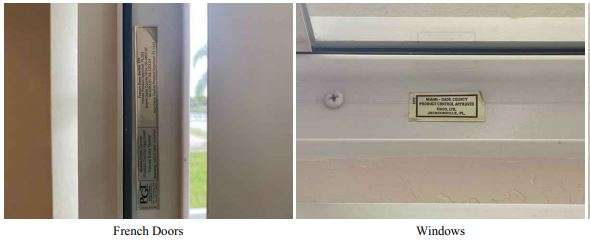

After your home inspector checks all of the openings on the property which is typically done at the start of the inspection while taking exterior photos of the elevations the home inspector will document accordingly on the protection chart as seen below. Below is a snippet of what the chart looks like and the A1 level of protection. To see all of the levels of protection click here for the full form. A – A1. is the top level of protection.
Below is a list of qualified inspectors listed in the form that has to have an active license. Home inspectors that are performing wind mitigation inspections must have completed an approved hurricane mitigation training. The inspector should be able to present this certificate when asked. Insurance companies at times do request this from the inspector or inspection company.
Due to the current pandemic and CDC guidelines, your home inspector may not ask that you sign the form on site. If so you can download the PDF version of the report and sign before sending it over to your insurer. Check with your insurance agent to verify if your signature is needed.

FAQ: Wind Mitigations
How to Find A Wind Mitigation Inspector?
- Google wind mitigation inspectors near me, the inspectors in your area should populate
- Ask your realtor or a realtor you know for a trusted home inspection company
- Ask your insurance company that you are seeking to get insurance from
Is a wind mitigation inspection required in florida?
Wind Mitigation are not a requirement by law but insurance companies are requiring them to be able to provide your the lawful discounts that you deserve for wind mitigation protection.
Is there free wind mitigation inspection florida?
Your insurance company my complete the inspection on your behalf saving you on the cost of the inspection. You may also want to check with your local municipality for any assistance that may be available.
Tip: If you are being asked for a wind mitigation form from your current insurance company then in most cases that is all that is needed to received the discounts your entitled to. If you are shopping for insurance then the new insurance company will in most cases request that you submit a 4 point inspection form and wind mitigation form to get an accurate qoute for your property. Check out our article “4 Point Inspection, What No One Tells You”.
Conclusion: Wind Mitigation Inspection Form
Congratulations! You now know more than most homeowners about the wind mitigation form (OIR-B1-1802) and hopefully, this read has helped you in making decisions to get the most wind mitigation credit you can. For additional questions comments or concerns you can comment below or text, call or email GGR Home Inspections. We service the Broward, Miami-Dade, and Palm Beach counties.






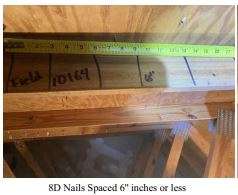




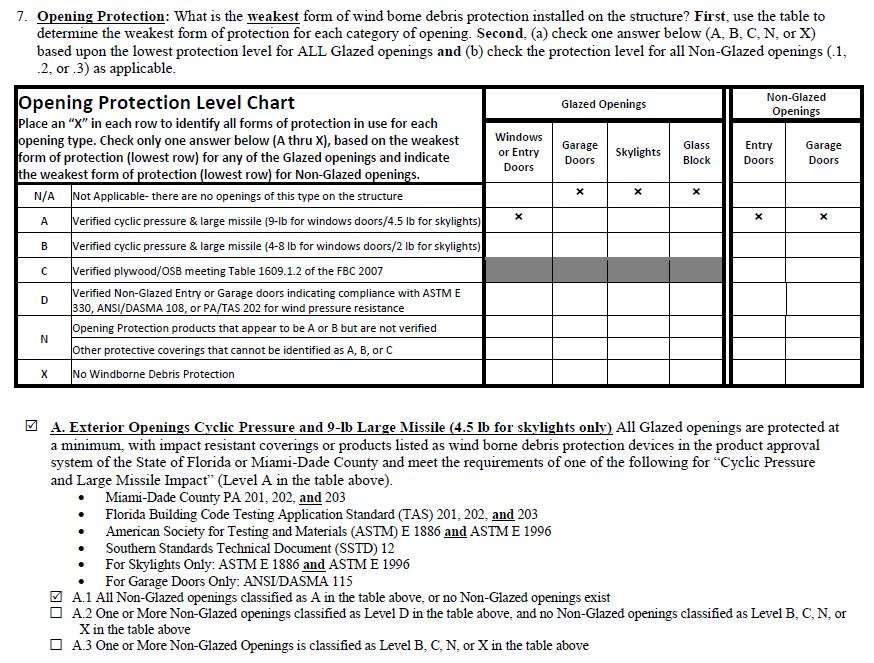


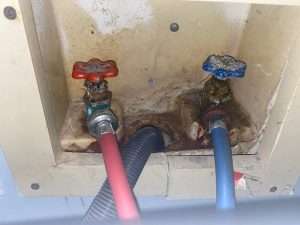
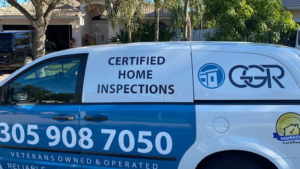


Pingback: Wind Mitigation Form Explained – GGR Home Inspections
Pingback: 4 Point Inspection, What No One Tells You – GGR Home Inspections
Pingback: Get a 4 Point and Wind Mitigation Inspection Later – GGR Home Inspections